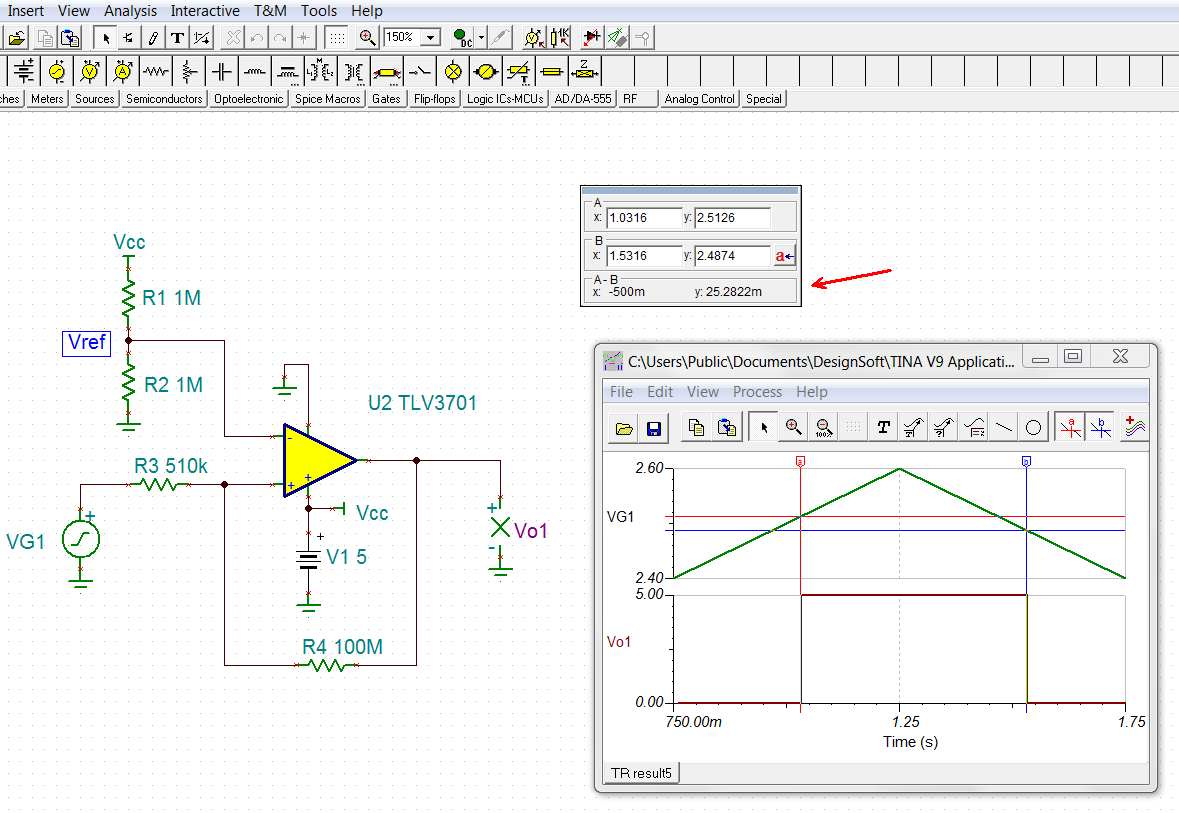Hi,
I am trying to obtain 20~30mV hysteresis in the TLV3701 comparator with minimal current draw at the non-inverting input.
Input voltage is applied to a resistor R1 connected to the non-inverting terminal. Ref. voltage is on the inverting terminal. Let R2 be the feedback resistor for hysteresis between the non-inverting input and output terminals.
How do I determine or choose the maximum allowed value of R2 to get me the 30mV of hysteresis without significantly loading the input source, which is very sensitive to current load. The input voltage source is obtained as the tap voltage of a resistive divider whose tap point is connected to R1.
I tried using R2 = 10Megohm with R1= 30k - 60k ohm, but that gives me 0.6V of hysteresis instead of 30mV.
I have seen standard equations to determine hysteresis, but they don't describe how to arrive at the max R2 value for a given comparator.
Are there equations for me to determine the max allowed value of R2 for the TLV3701 comparator? I would like to keep the current draw from the input voltage source (including the current through the resistor divider) to < 5uA.
Regards,
Nitish
Let R1 be the resistor between the input and the non-inverting terminal.Input voltage is obtained using a voltage divider from a battI would like to keep the



